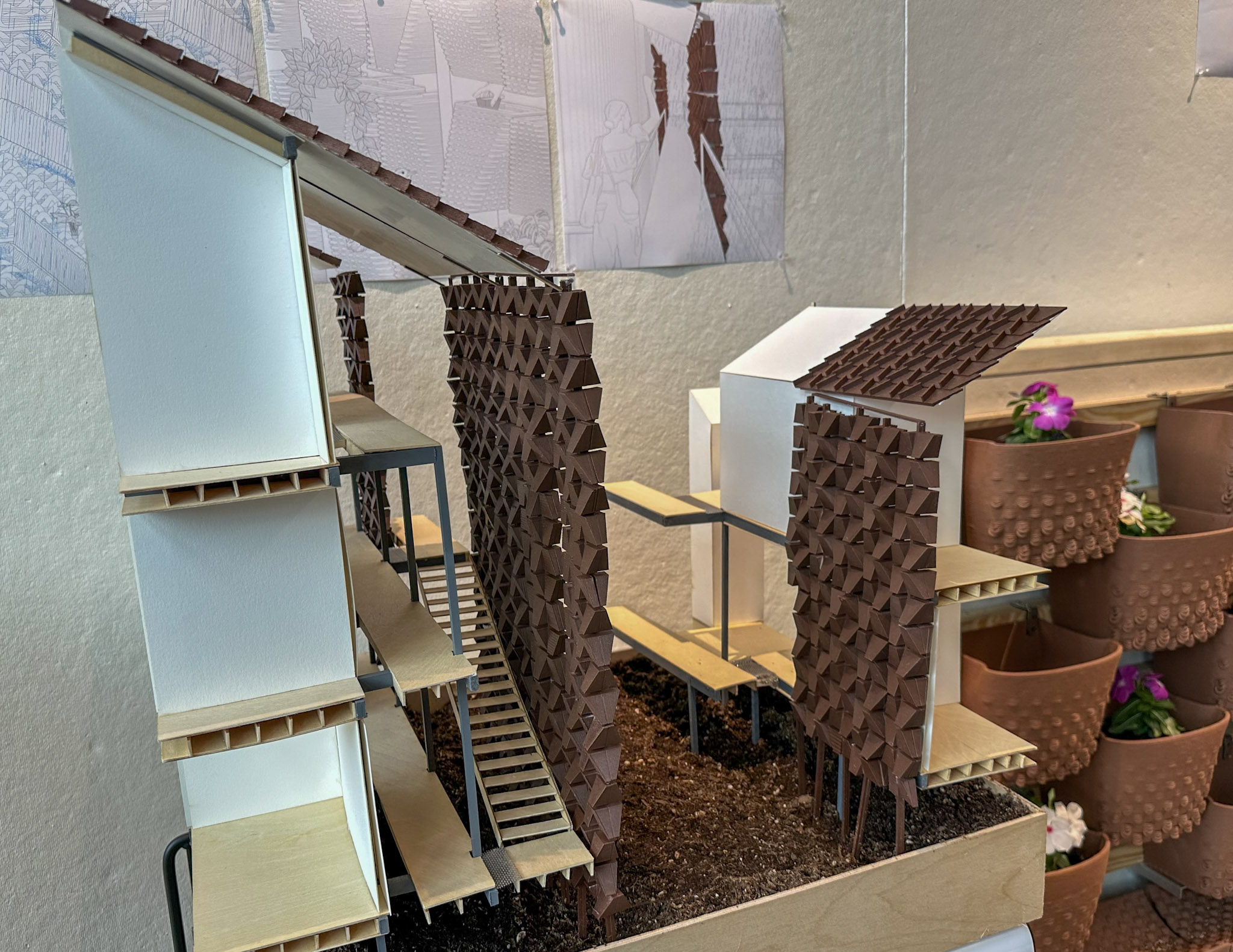How a Tulane Architecture Professor is shaping the Future of Sustainable Architecture
The Tulane Innovation Institute Faculty Innovation Grant
supports Adam Marcus’s Ecological Tectonics class
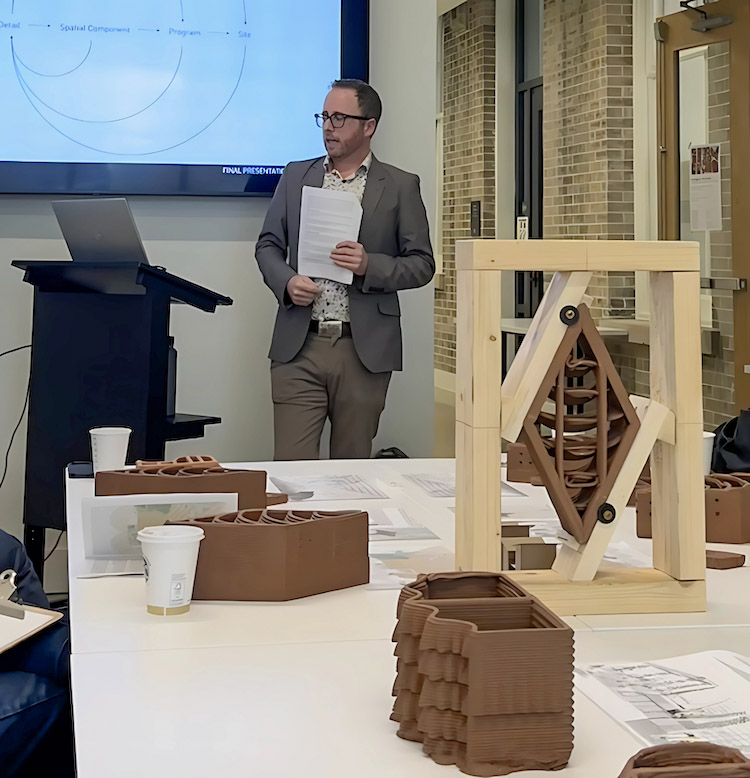
At the intersection of architecture, climate science, and craft, Associate Professor Adam Marcus’s Spring 2025 research studio at the Tulane School of Architecture and Built Environment challenged students to envision buildings that not only withstand the environment but actively engage with it. Supported by one of the inaugural Faculty Innovation Grants from the Tulane Innovation Institute, the course, “Ecological Tectonics: Ceramic Assemblies for Climate Adaptation,” became an exploration of how 3D-printed ceramics might lead architecture toward a more sustainable future. The course, affiliated with the School’s new Center on Climate Change and Urbanism, is part of a broader initiative to develop innovative architectural strategies for climate adaptation.
The studio wasn’t just about form and aesthetics—it was about environmental performance. Working in teams, twelve advanced undergraduate and graduate students developed design concepts for a small residential building site in New Orleans’ St. Roch neighborhood. Their challenge was to utilize ceramic facades to rethink how buildings can interact with the local ecosystem and better manage environmental factors.
“The Faculty Innovation Grant from the Tulane Innovation Institute provided essential funding and support, allowing us to explore the possibilities of 3D-printed ceramic facade systems as environmental tools,” Marcus said. “Students examined how these ceramic systems could interact with stormwater infrastructure, create habitats for plant and animal species, and support passive cooling strategies,” he added.
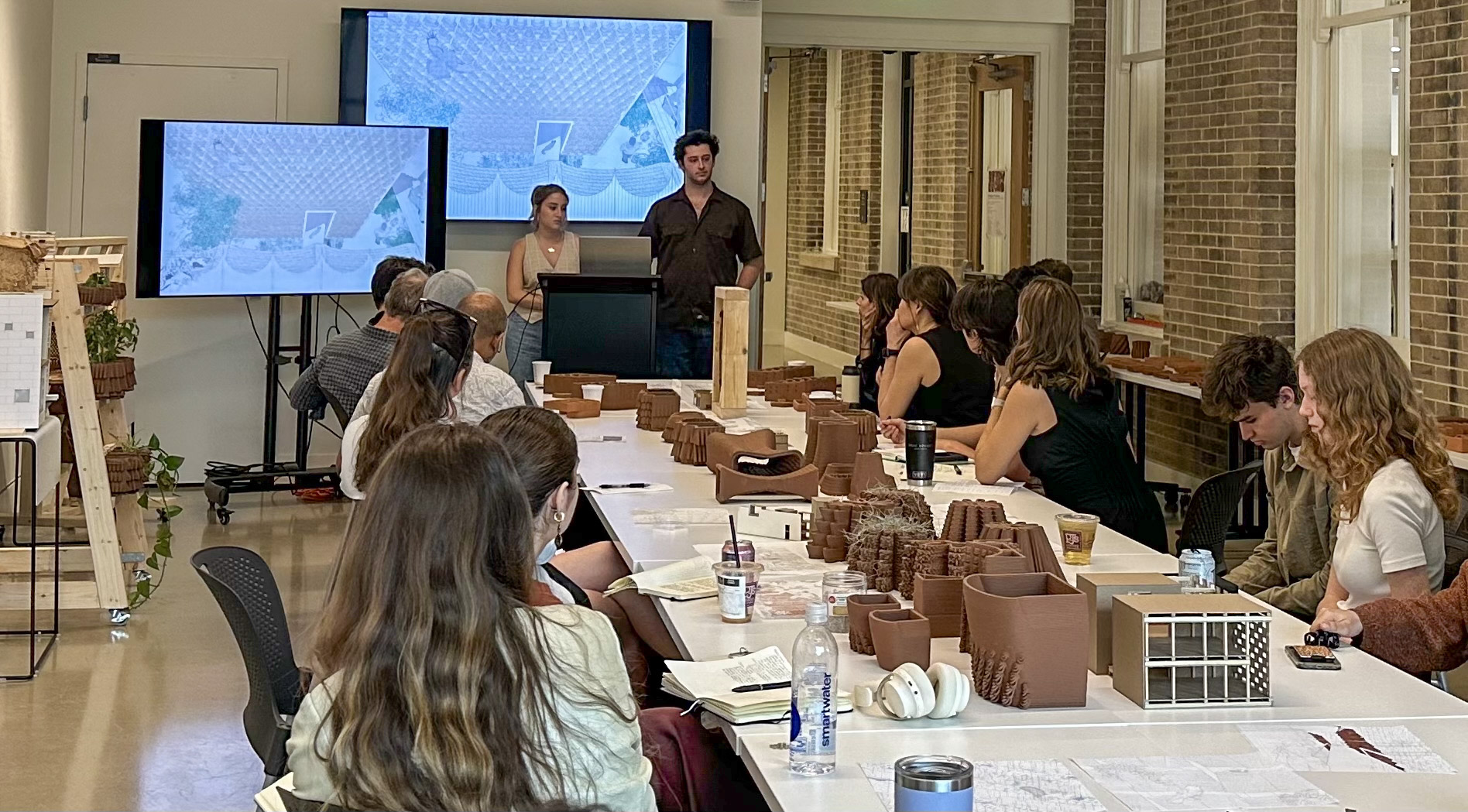
The students’ final presentations, held May 6, 2025, included architectural drawings, models, and full-scale facade prototypes—made possible by the new Digital Ceramics Lab, a collaboration between the School of Architecture and the Newcomb Art Department. The lab builds on Tulane’s ceramics legacy, which traces back to the Newcomb Pottery Enterprise, a pioneering women’s collective from the early 20th century that combined craft, education, and economic opportunity.
Supporting projects like this is central to the mission of the Innovation Institute, which launched its Faculty Innovation Grants in Fall 2024 to bring entrepreneurial thinking into classrooms across all ten Tulane schools.
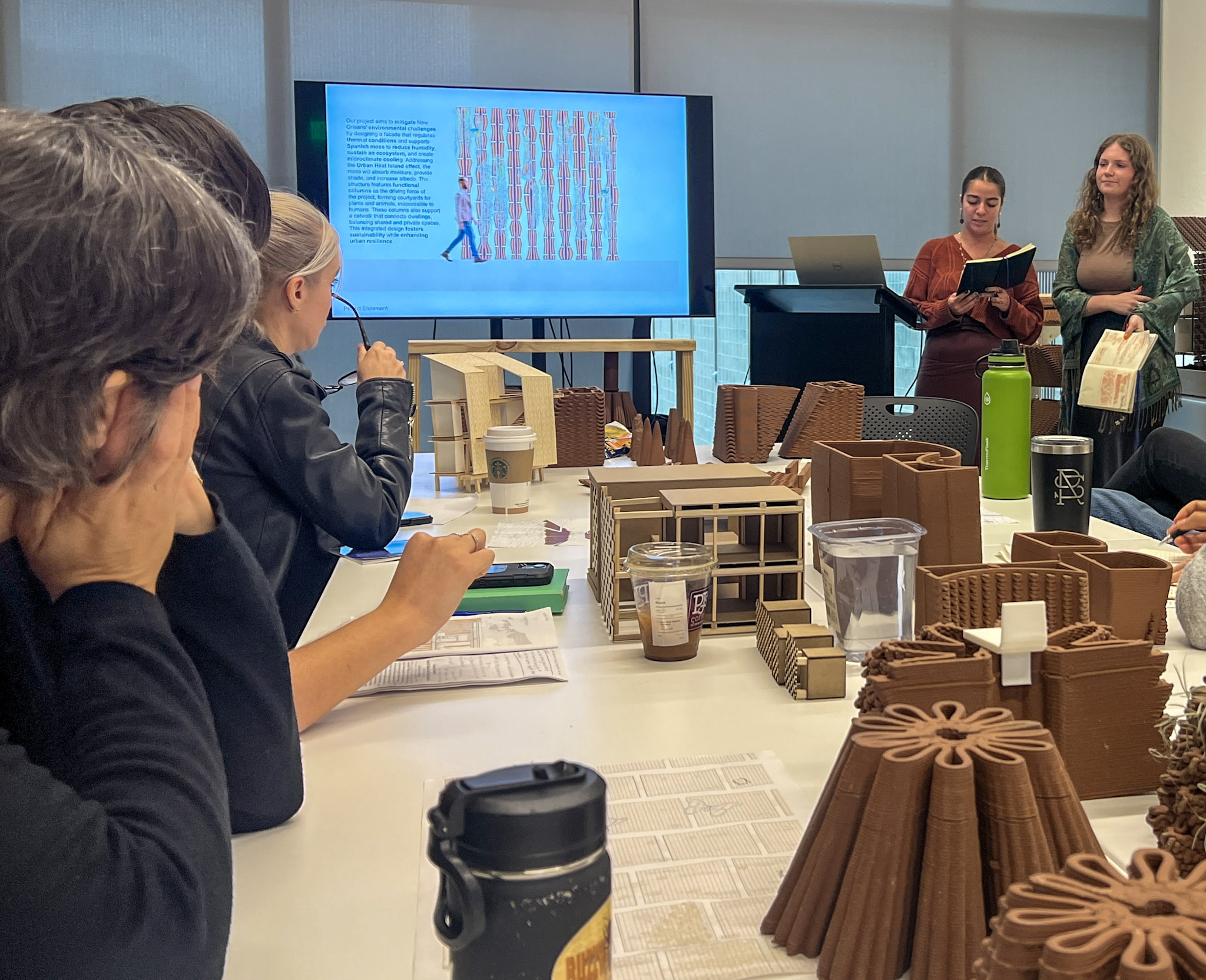
“We want Tulane students to develop the skills to bring new ideas to life and also to challenge them in their coursework to think creatively and consider how their innovations can scale,” said Sharon Goldsmith, Executive Director of Innovation and Entrepreneurship Programs.
“It was inspiring to learn how the students thought about material choices—how ceramics might outperform metals in certain conditions, and what happens when you introduce unconventional additives, like absorbent chia seeds, to further interact with the building materials,” Goldsmith continued.
The Tulane Innovation Institute also provides support that extends beyond creative entrepreneurial thinking, offering training in intellectual property and pathways to commercialization. John Scott, Associate Director of the Office of Intellectual Property Management, visited the class to discuss when and how intellectual property becomes relevant in novel fabrication processes. He introduced students to patents, design protections, and commercialization strategies, encouraging them to think like both designers and innovators.
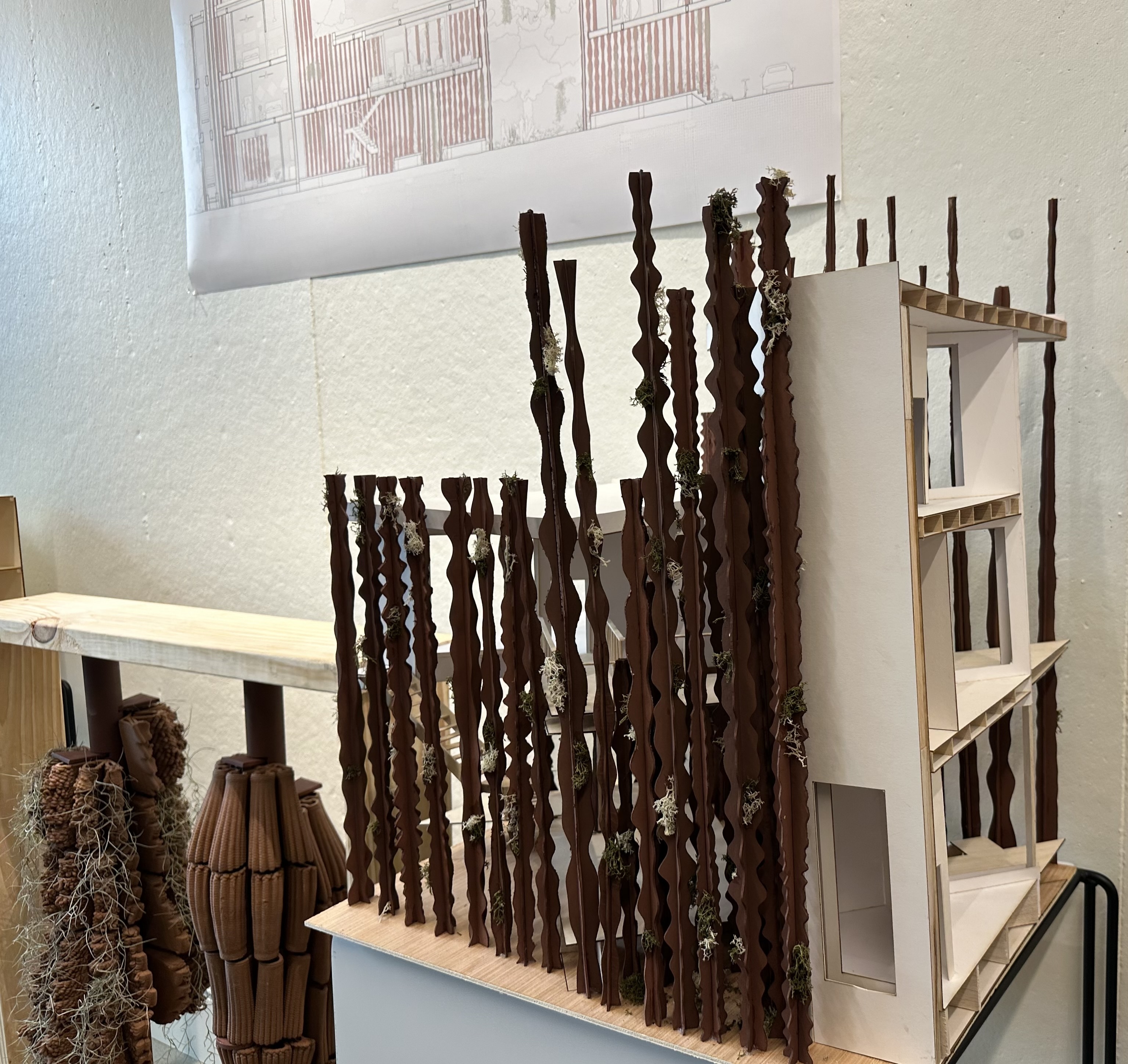
In Marcus’s Spring studio, students brought new life to clay—an ancient material used by humans since prehistoric times—reimagining it through 21st-century robotic fabrication while addressing the climate challenges of today. The work of Marcus and his students opens endless possibilities for how the buildings we inhabit can actively engage with and support the ecosystems around us.
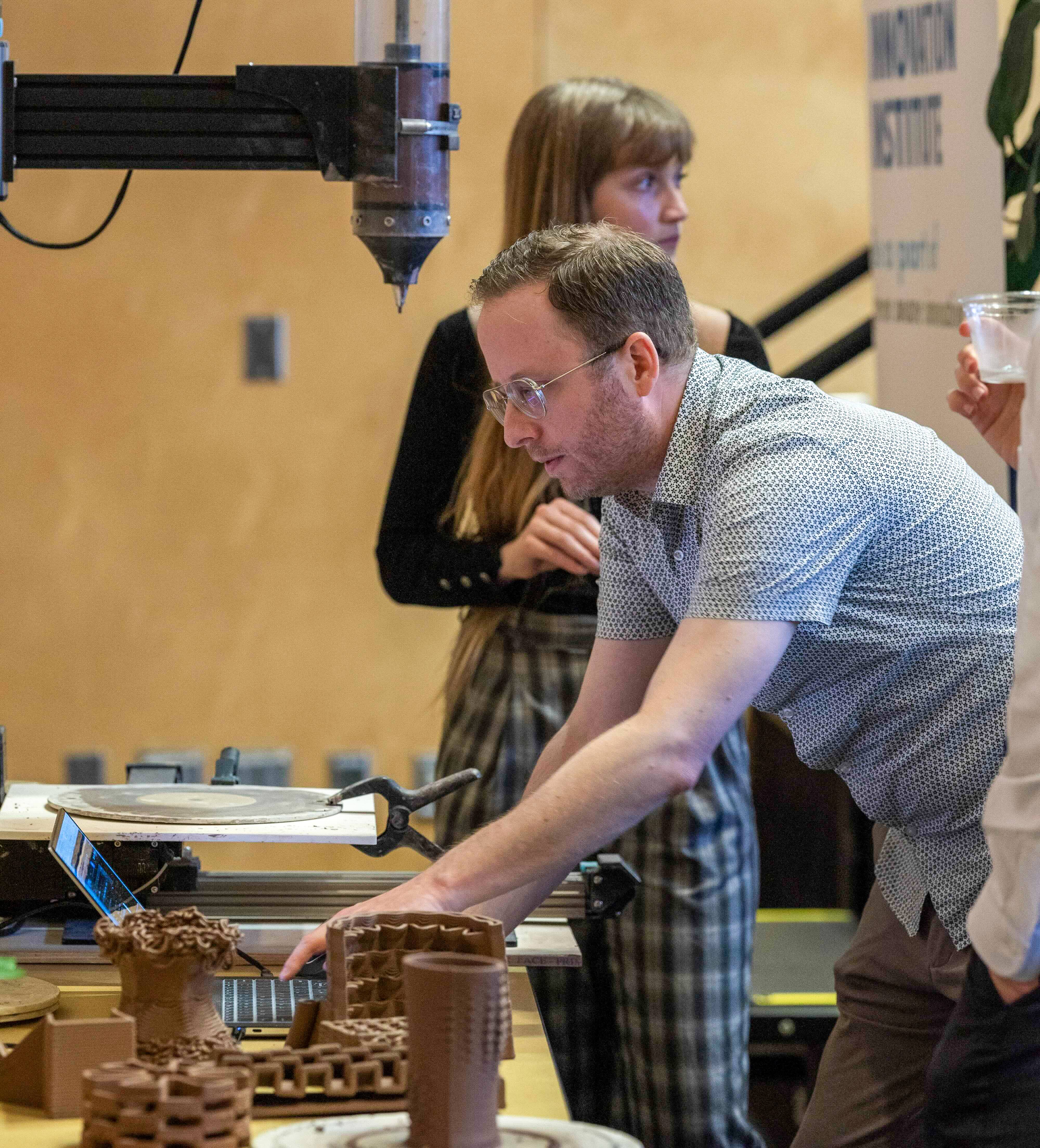
Student Researchers included Caroline Cameron, B.Arch, Analiese De Saw, M.Arch, Jacqueline Hemman, B.Arch, Griffin Kass, B.Arch, Ariel Levine, B.S. Arch, Emma Lindley, B.Arch, Cassiana Mefrige, B.Arch, Clara Quandt, B.Arch, Caleb Schroeder, B.Arch, Emmet Tanzer, B.S. Arch, Alexa Trapani, B.Arch, and Walter Workman, B.Arch.
